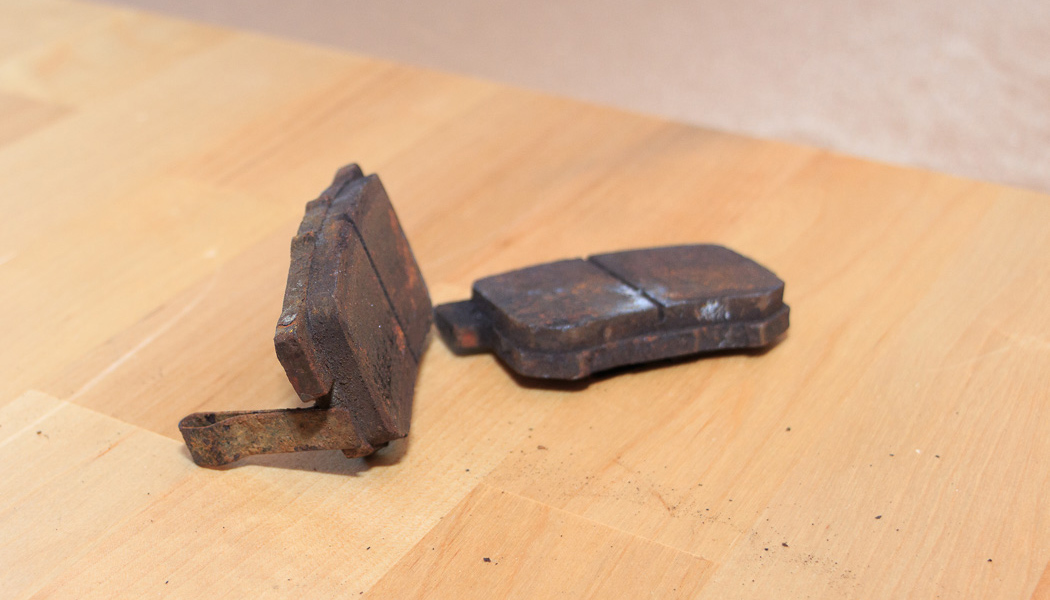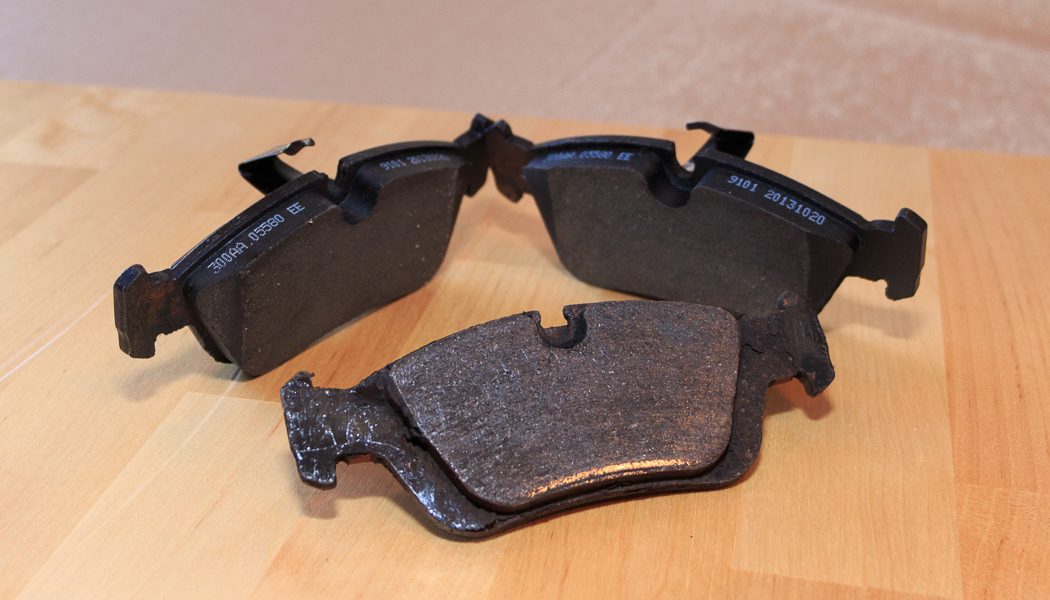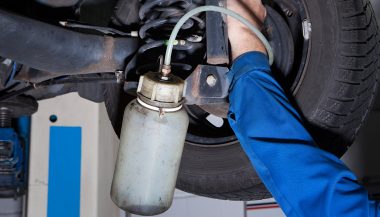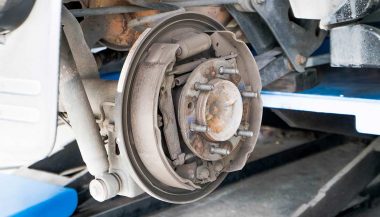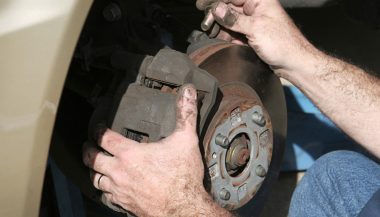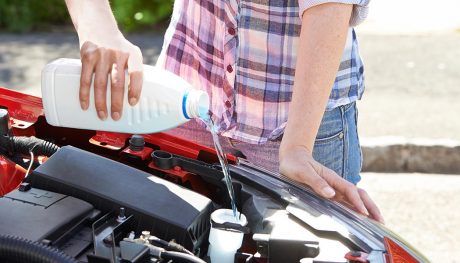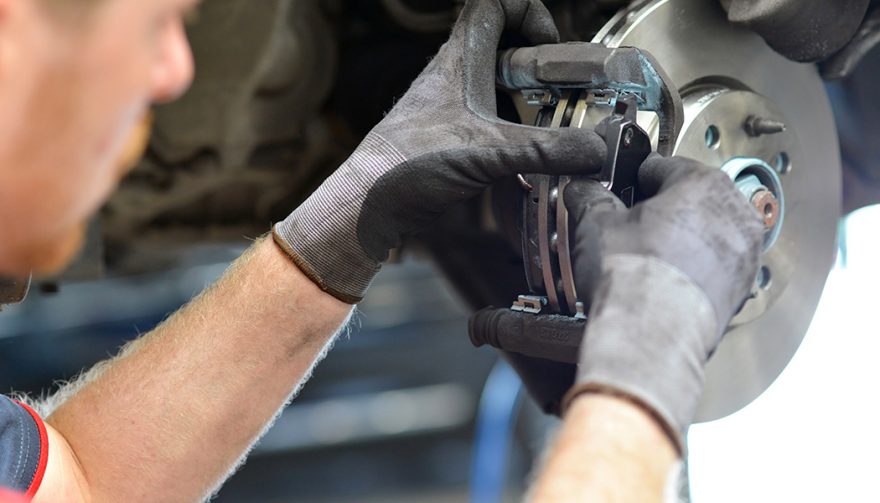
Don't let the first sign of bad pads be a blown stop sign. Let us tell you when to replace brake pads before there's an issue
Before That Panic Stop: How to Know When to Replace Brake Pads
“Why should I replace parts that are not completely worn out?” Mechanics often hear that question when they recommend replacing brake pads that are only partially worn out. The answer is “Because the brake pads are giving you a problem now, and the only way to stop the problem is to replace them.”
If you are wondering about when to replace brake pads on your car, this article should clear up some of the confusion.
What Are Brake Pads?
Disc brake pads, to be exact, are made up of two components. The first part is a pad of friction material that squeezes against the brake rotor (your car has one rotor and two brake pads for each wheel) when you step on the brake pedal. That squeezing force stops the car. The pad of friction material is bonded to a thick, steel backing plate. Together, the steel backing plate and the friction material is called a ‘brake pad.’
When Are Brake Pads Worn Out?
Perhaps you hear a faint, high-pitched squealing noise when you apply the brakes? The noise might be loudest under light braking and could even disappear under heavy brake pedal pressure. That squealing noise is a warning and is caused by built-in wear indicators. When the friction material is worn enough to need replacement, you will hear that noise if your car has those wear indicators. Many types of brake pads do not have that feature.
If you inspect the brakes and see that only one pad is worn out, you must still replace the whole set. A set means all the brake pads on both front wheels or on both rear wheels, whichever is affected. It’s not safe to replace only one pad of the set of four. Uneven braking will result. And you don’t want your car to change lanes by itself when you slam on the brakes.
There Are Other Reasons to Replace Brake Pads Besides Wear
Brake pads can give you trouble long before they are completely worn out. Depending on the severity of the symptoms, and their effect on safety, the problems can range from minor annoyances to severe safety issues. Here are five reasons you might want to replace your brake pads before they are completely worn out.
Uneven Wear
Remember that each wheel has two brake pads, one inner pad, and one outer pad. If the inner pad is worn out, but the outer one is still good, you have a sticking caliper piston. Fix your caliper before you install new pads, or the problem will soon reoccur. If the outer pad is worn out, but the inner one is still good, the caliper is not sliding freely on its mount. Clean and lubricate the caliper slides or pins before you install new pads. Once you’ve replaced the pads, make sure you keep up on caliper maintenance or you’ll find yourself in the same boat of premature pad replacement again soon.
Brake Pedal Vibration
Brake pedal vibration or pulsation is caused by out-of-true disc rotors. They need to be resurfaced or replaced. But by the time rotors are bad enough to give trouble, the pads themselves likely have developed abnormal wear patterns. If they have, the pads will soon cause abnormal wear patterns in the new rotors. You don’t want that to happen. That’s when to replace brake pads. Install new pads with your new rotors and fix the problem for good.
Steering Wheel Vibration
So, when you apply the brakes lightly from high speed, like when slowing down on a freeway off-ramp, the steering wheel vibrates? That might be when to replace brake pads. The annoyance is caused by a rotor problem. The rotors need to be resurfaced or replaced. As in the last example, don’t reuse old pads on new or resurfaced rotors. That will only increase the probability of problems reoccurring.
Noise
Some brake pads are noisy. There are many reasons for that. Cheap quality, contamination by brake fluid or grease (it can’t be cleaned because the pads absorb fluid and grease like sponges), and unusual wear patterns. If the brakes are making more of a racket than you’d like, all are all good reasons to replace brake pads that are not worn out.
Age
Suppose you inherit a car that hasn’t been driven in decades? Great. But friction materials absorb moisture from the atmosphere, then fall apart under heat and heavy use. They could also have rusted or become brittle. And you don’t know how they were treated before they were put away. Put on a new set of brakes before driving your new prize.
Any of the above issues could mean that right now is when to replace brake pads. Better before than later. When it comes to the overall cost of your vehicle, spending a little here on safety can really pay off.
Like Buying Shoes – You Have Many Options
Brake pads for street vehicles come in three basic formats: organic, semi-metallic and ceramic. What does all that mean? Here is an explanation of the three formats.
- Organic: These are the bargain basement economy pads. They will wear the fastest. Stopping power when very hot? You get what you pay for.
- Semi-metallic: This is what many vehicle manufacturers install on new passenger cars. Yes, they are harder than organic pads, so they will eventually wear into the rotors. But you are not supposed to leave your brake pads on long enough to damage the rotors. These pads offer a versatility that other brake materials don’t, meaning these pads will stop well when they are cold and when they are hot.
- Ceramic: These are great if you are trying to stop the Space Shuttle on touch down or a jet airliner on landing. They are great on racecars too. The hotter ceramic pads get, the better they work. The colder they are, the less they bite. Other drawbacks for street use? That’s always a lively topic of debate.
One Final Consideration – Brake Dust
If you have nice wheels, and you bought high-performance brake pads, you might wonder why you have to wash brake dust off your wheels every week. It looks terrible.
High-performance pads turn motion into heat very effectively. Almost as effectively as they turn their compound into brake dust. To avoid the problem of excessive brake dust, some pads are manufactured from compounds that are supposed to produce less brake dust than normal. If that is your big pain point, the appearance of your wheels, then look for low-dust brake pads.
So when it comes time to replace your pads, should you take it to a shop or should you take on the task yourself? Replacing your own brake pads is a rite of passage for DIY mechanics. We have a great article here that will arm you with a ton of knowledge for the job should you choose when to replace brake pads. And, yes, you should buy a good repair manual for your car before you begin.

